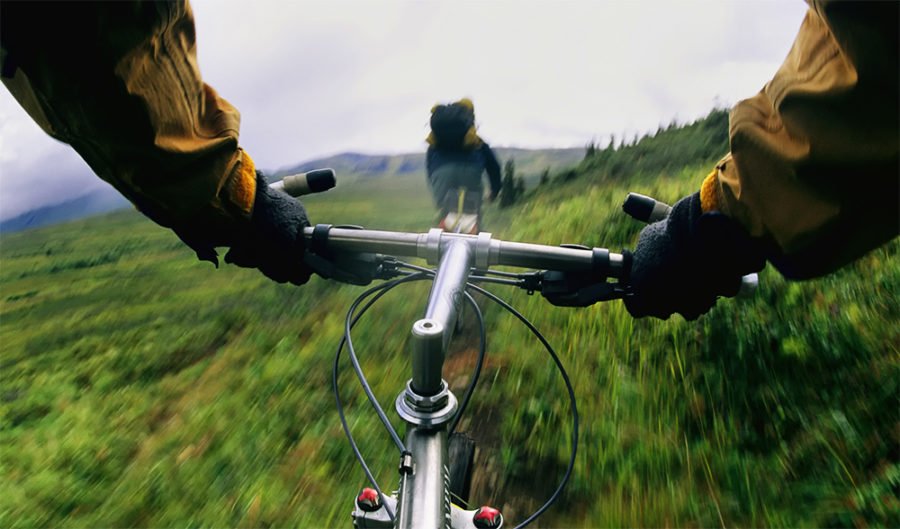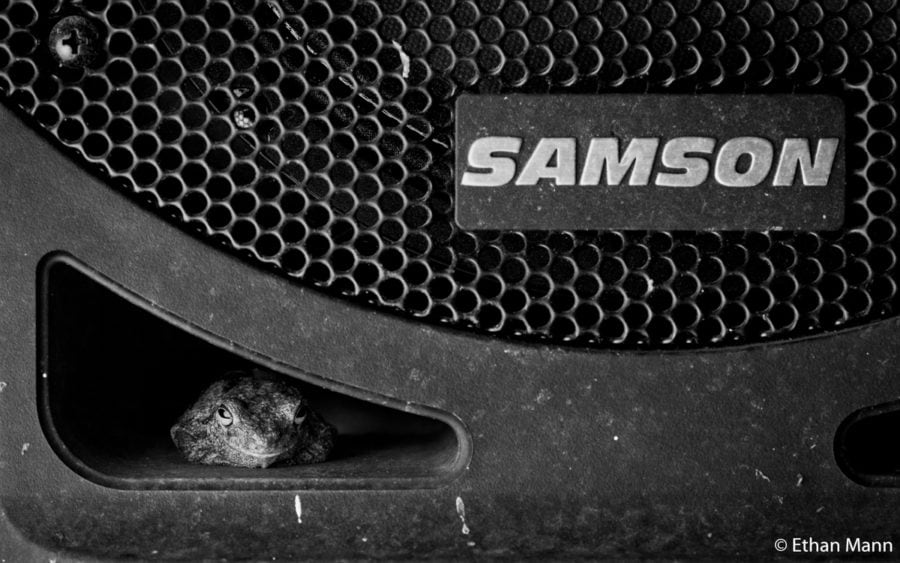Photography tips: Point of view composition

POV, or Point of View, is a cinematic method that incorporates powerful editing and camera angle technique for capturing a character’s subjective view of a film sequence.
Alfred Hitchcock loved using POV technique to scare us, and it worked. In sports, the POV camera captures a game from the point of view of the player. The view might be over the shoulder or any location close to their position, of them or of the action.
When looking at videos on YouTube or Vimeo, it seems every biking, climbing, kayaking, skydiving and skiing athlete is attaching a small camera like the GoPro to their helmet, bike bars or wing.
The reason POV video shots, even from a simple camera like a GoPro, are popular is because the images are exciting and pull the viewer into the action, and they look great on the web.
Point of View composition for still images
So can that style of POV cross over into the stills we make with our better quality SLR cameras? Can you get shots on the go without expensive specialised mounts and avoid smashing your camera in a fall? It is one thing to strap or tape a tiny $300 GoPro to your bike, but what about a pricey and heavy SLR?
It’s been said many times that good photography depends on being in the right place, at the right time and in perfect light. The first time I successfully dove into shooting POV style photos on assignment was a shoot I did documenting a team of cyclists pedaling across the length of the Alaska Range, a distance of 1200km. Since I was documenting the story for National Geographic, I knew I had to shoot the riders and the riding action from every conceivable camera position.
The POV action photos ended up playing a big part in my shoot. In fact, one of the riders seriously questioned my ability as a photographer because often when he watched me taking shots, my eye was nowhere near the camera’s viewfinder.
And that’s the method when shooting POV. Many of those shots were made holding the camera low by the rider’s pedals as they were bashing through rocks or at handlebar-level view while they rode on glacier ice.
How to shoot POV-style
Shooting in Alaska’s dramatic mountains and glaciers was easy, but I found capturing the biking action on the Alaskan tundra in my photos was nearly impossible because the landscape is forever flat. The tundra was a big part of the ride, so I needed a way to express the dynamic action of riding across it; I decided to use a fixed POV on the bike.
I knew that this camera perspective (see photo above) would nail the rider’s action on the trail no matter how flat and uninteresting the scene looked to me, the photographer, as I stood alongside and triggered my camera’s wireless remote.
Also, since this shoot was done in a photo-documentary style, I had to have a very quick setup. My bike POV mount had to be simple and ensure bomb-proof results.
To be certain I had things right before the trip, I practised shooting the POV photo on singletrack near my house. I worked out a camera angle that I knew could deliver the results I wanted. For the camera mount I chose to use a Bogen Super Clamp attached to the seat post of the bike.
The clamp was fitted with an off-centered Gitzo ballhead that could swivel far away from the clamp as well as the seat post, and the camera could be positioned so it didn’t interfere with the rider’s position.
I used gaffer tape to prevent the clamp rotating during the shoot, and also to attach the Pocket Wizard wireless remote to the seat post. A sharp knife was my POV dismounting tool. The camera was triggered by my wireless Pocket Wizard transmitter as I ran alongside or rode behind the cyclist.
I used a 16mm fish-eye lens on a Nikon F-100, a film camera that is similar in size to the Nikon D800. These SLRs are the size of Earth if the GoPro is the Moon, but the mount was stable, even as the rider was bouncing down a caribou track. The final results are far better for print than anything that can be achieved using the GoPro.
For the published story, the POV action photos I created in Alaska were the perfect complement to my other photos on the track. The intention of the POV style is to bring the viewer into the scene for a moment, but not to end the story there.




